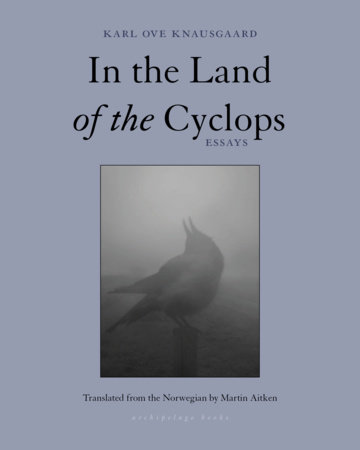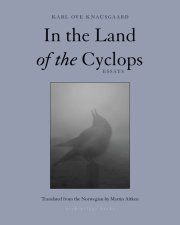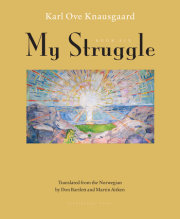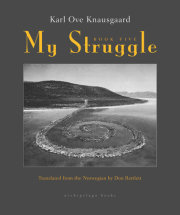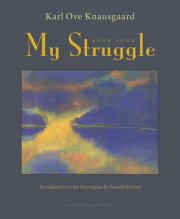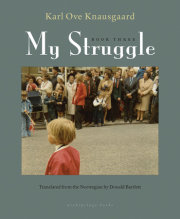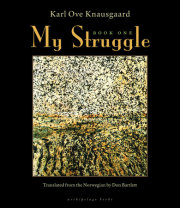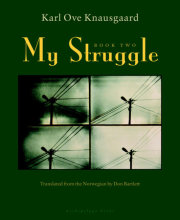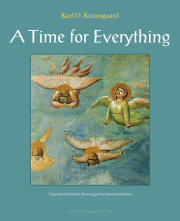ALL THAT IS IN HEAVEN.
A few days ago a picture appeared in a number of newspapers online, it was from a medical
examination, an ultrasound image of a man’s testicles; there was a face in there as clear as
day, with eyes, a nose and mouth, a child gazing disconcertedly out of its darkness in the
depths of the body. The phenomenon is not uncommon and has often been associated
with Christ, perhaps because only his face makes such occurrences noteworthy enough to
report on. The face of Jesus can appear in a marble cake, a slice of burnt toast, a stained
piece of fabric. Last autumn I was stopped by a woman on the street in Gothenburg, she
wanted to give me a photograph of Christ seen in a rock face somewhere in Sweden. These
viral images are not vague schemata filled in by vivid imaginations, but utterly convincing;
the face staring out of the man’s testicles is incontestably that of a child, and the male
figure in the rock face, his hand held up in a gesture of peace, is incontestably an image of
Jesus Christ exactly as he has been iconised. This is so because the forms that occur in the
world are constrained in number, and the human face and body are one such form. They
can just as easily appear in a pile of sand as in a pile of cells.
If you lie on your back and look up at the sky on a summer’s day, hardly a few minutes will
pass before you see a recognisable shape in the clouds. A hare, a bathtub, a mountain, a
tree, a face. These images are not constant; slowly they transform and turn into something
else, as opposed to the person lying there looking at them, whose face and body remain
unchanged, and to the natural surroundings from which they are observed: the ground with
its grass and trees, they too remain unchanged. But the immutable is only seemingly so, for
the face, the body, the grass and the trees change too, and if we return to the same spot,
this clearing in the forest, fifteen years later, it will be completely different and the face and
body will also have changed, albeit not unrecognisably so. However, in the greater
perspective of time they too will change; over a two-hundred-year period the face and body
will have arisen, formed, deformed and dissolved in sequences of change not unlike those
undergone by the clouds, though far more slowly since they take place in the denseness of
the flesh rather than in the vaporous firmament.
That we do not see the world in this way, as matter at the mercy of all-destructive forces, is
only because that perspective is not available to us, our being confined within our own
human time as it were, viewing all change from that vantage point only. We see the changes
in the clouds, but not the changes in the mountains. On this basis we form our
conceptions of the immutable and immutability, of change and changeability. We retain in
our minds the form of the mountain as it appeared to us the day we stood in front of it,
but not the forms of the clouds that were above the mountain at that same moment. Our
body exists somewhere in between these monitors of mutability that measure the speed of
our lives. Our own time, the change we are able to register as we stand here in the midst of
the world, is, apart from the movements of the body, almost always bound up with water
and wind. The raindrops that drip from the gutter, the leaf whirled into the air, the clouds
that slip over the ridge, the water that trickles towards the stream, the river that runs into
the sea, the waves that form and break apart in an ever-changing abundance of unique
forms. We can see this, for the time in which such movement occurs is synchronised with
that of our own existence. We refer to that time as the now. And what happens within us
in the now is not dissimilar to what happens outside us, a continual formation and breaking
apart that never ceases as long as we live: our thoughts. On the sky of the self they come
drifting, each unique, and over the precipice of oblivion they vanish again, never to return
in the same shape.
The idea of a connection between our thoughts and the clouds, between the soul and the
sky, is ancient and has always been opposed, or restrained, by the connection between the
body and the earth. That which is fleeting, ethereal and free has always been eternal; that
which is firm, material and bound has always been transient. With the breakthrough of
modern science in the seventeenth century, which pushed back the limitations of the
human eye with the invention of the microscope and the telescope, an era in the western
world in which the human body began to be systematically dissected, one of the greatest
challenges to arise concerned the nature of thought in this system of cells and nerves.
Where was the soul in this mannequin of muscles and tendons? The French philosopher
Descartes performed dissections in his apartments in Amsterdam, striving to find the seat
of the soul, which he believed to be found in one of the glands, and to trace human
thought, which he believed to be conducted through the tiny tubes of the brain. Science
has come no closer to pinning down these concepts in the three hundred or so years that
have passed since Descartes made his investigations, for the distinction between the I who
says I think, therefore I am, and the brain in which that sentence is conceived and thought,
and from which it is then issued, that biological-mechanical welter of cells, chemistry and
electricity, is immeasurable, as one of Descartes’ contemporaries only a few city blocks
away, the painter Rembrandt, demonstrates in one of his dissection pictures where the
upper part of the skull has been removed, held forth like a cup by an assistant while the
physician himself cautiously cuts into the exposed brain of the corpse. No thought, only
the tubes of thought; no soul, only its empty casing. What were thought and the soul? They
were what stirred inside.
In his essay collection Descartes’ Devil: Three Meditations, a substantial and near-fuming
apologia for Descartes, the German poet Durs Grünbein writes about one of the Baroque
philosopher’s dissections of an ox in whose eye Descartes claimed to have seen an image
of what the ox itself had seen in its final seconds of life. Descartes writes: “We have seen
this picture in the eye of a dead animal, and surely it appears on the inner skin of the eye of
a living man in just the same way.” Of this strange idea, Grünbein writes: “Descartes, who
imagines the retina as a sheet of paper, as thin and transluscent as an eggshell, really
believes that something seen is, as it were, imprinted on it.”
Copyright © 2021 by Karl Ove Knausgaard. All rights reserved. No part of this excerpt may be reproduced or reprinted without permission in writing from the publisher.

